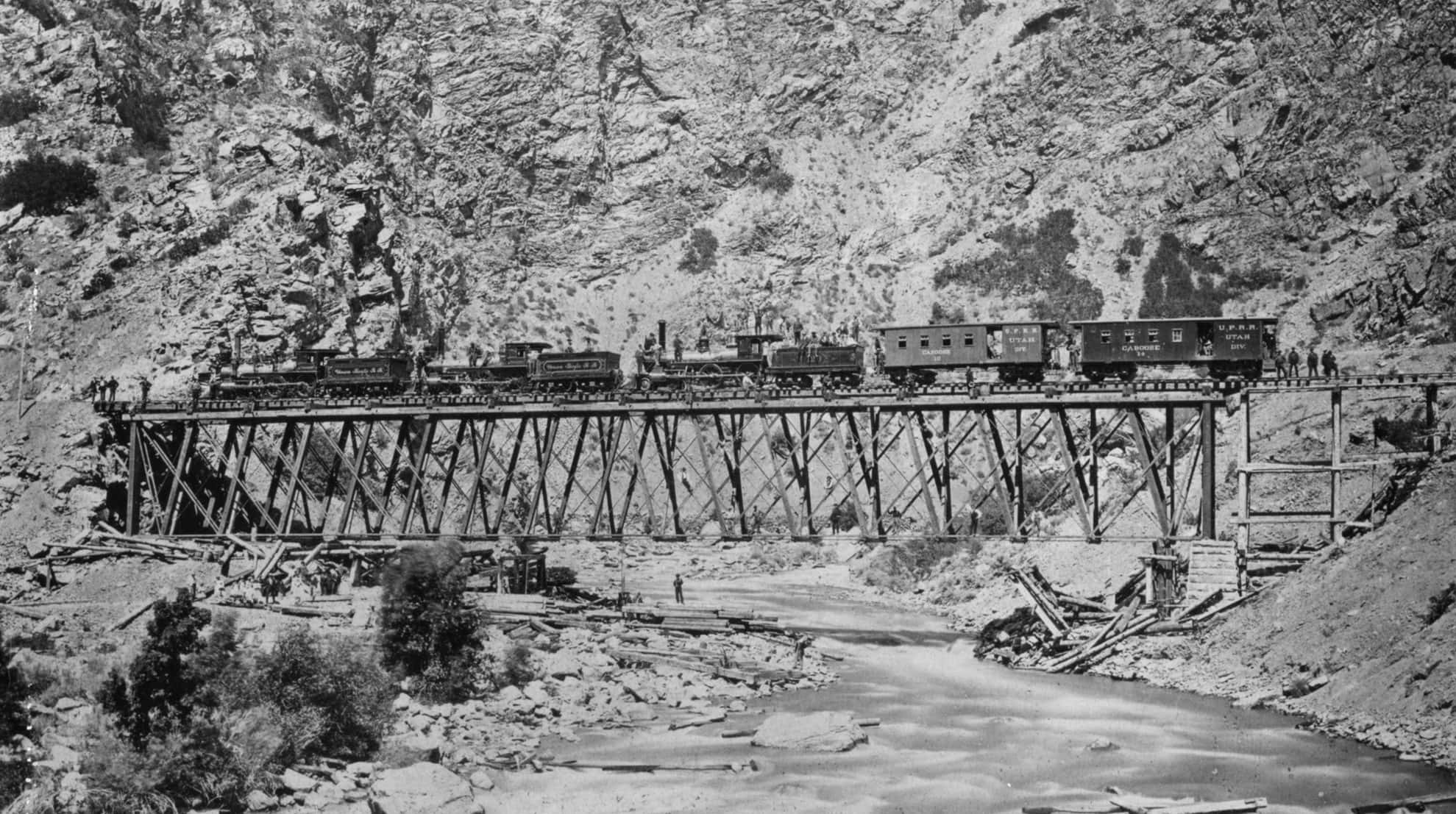
Ever wondered how America's vast lands were connected coast to coast before the age of airplanes and highways? The Transcontinental Railroad was the game-changer, stitching the nation together with steel rails and steam power. Imagine, back in the 19th century, this engineering marvel not only transformed travel but also the entire landscape of trade and communication in the U.S. But what's the real scoop behind this monumental project? From the sweat and toil of thousands to the ingenuity that powered through mountains and deserts, there are stories and facts about the Transcontinental Railroad that are as fascinating as they are inspiring. Ready to get on board for a quick ride through history? Let's chug along and uncover some amazing facts about this incredible feat of engineering and human endeavor.
Key Takeaways:
- The Transcontinental Railroad, completed in 1869, connected the East and West of the United States, boosting the economy, shaping the nation, and inspiring future innovations.
- The railroad's impact continues today, with historical sites, modern railroads, educational programs, cultural celebrations, and environmental considerations preserving its legacy and inspiring new generations.
The Birth of the Transcontinental Railroad
In the mid-19th century, a monumental project began that would forever change the landscape of America. The Transcontinental Railroad was a massive undertaking, aiming to connect the eastern United States with the Pacific coast. This feat of engineering and human effort was not just about laying tracks; it was about uniting a country.
-
Construction started in 1863, during the Civil War, under the directive of the Pacific Railway Act. This act was a pivotal moment, demonstrating the government's commitment to forging a united nation.
-
Two companies were tasked with the challenge: The Central Pacific Railroad, starting in Sacramento, California, and the Union Pacific Railroad, beginning in Omaha, Nebraska. Their tracks would meet in Utah.
The Challenges and Triumphs
Building the railroad was no small feat. Workers faced harsh conditions, rugged terrains, and the daunting task of laying miles of track.
-
Diverse workforce: The Central Pacific Railroad employed over 10,000 Chinese immigrants, who played a crucial role in constructing the railroad through the Sierra Nevada mountains. Meanwhile, the Union Pacific hired a mix of Irish immigrants, Civil War veterans, and others.
-
Innovative techniques were developed to overcome natural barriers. For example, to get through the Sierra Nevada, workers blasted tunnels through solid granite, a task that required immense skill and bravery.
-
Completion: The two railroads met at Promontory Summit, Utah, on May 10, 1869. This historic event was marked by the driving of the "Golden Spike," symbolizing the completion of the railroad.
Impact on America
The completion of the Transcontinental Railroad had a profound impact on the United States, shaping its economic, social, and political future.
-
Economic growth: The railroad opened up new markets and made the transport of goods across the country faster and cheaper. This spurred economic growth and helped integrate the national economy.
-
Population movement: It became easier for people to move westward, leading to rapid settlement and development of the western United States.
-
Time zones: To manage the scheduling of trains and improve safety, the railroad companies adopted standardized time zones, which eventually led to their nationwide adoption.
Technological Innovations
The Transcontinental Railroad was not just a triumph of human will; it was also a showcase of technological innovation.
-
Steam locomotives were the backbone of the railroad, capable of pulling long trains over vast distances. Their design and efficiency improved significantly during the construction of the railroad.
-
Telegraph lines often ran alongside the railroad tracks, allowing for instant communication across the country for the first time.
-
Railroad spikes and ties: The use of durable materials for spikes and ties ensured the longevity of the tracks, some of which are still in use today.
Cultural Significance
Beyond its economic and technological impact, the Transcontinental Railroad also held deep cultural significance.
-
Unity: The railroad symbolized the physical and metaphorical connection between the East and West, promoting a sense of national unity.
-
Literature and art: The railroad inspired countless works of literature, art, and music, capturing the imagination of a nation and symbolizing progress and innovation.
-
Influence on Native American tribes: Unfortunately, the railroad also had a profound negative impact on Native American tribes, leading to the loss of land and a way of life for many.
The Legacy Continues
Today, the Transcontinental Railroad is celebrated as a pivotal moment in American history, a testament to human ingenuity and perseverance.
-
Historical sites: Places like Promontory Summit remain popular tourist destinations, where visitors can learn about the railroad's history and its impact on America.
-
Modern railroads: While technology has evolved, the railroads still play a vital role in America's transportation network, carrying both freight and passengers across the country.
-
Educational programs: Museums and educational programs across the United States continue to teach new generations about the challenges and triumphs of building the Transcontinental Railroad.
-
Cultural celebrations: Annual events and reenactments celebrate the driving of the Golden Spike, keeping the spirit and significance of the Transcontinental Railroad alive.
-
Innovation inspiration: The story of the Transcontinental Railroad continues to inspire engineers, entrepreneurs, and dreamers to tackle big challenges and think beyond the possible.
-
Environmental considerations: Modern railroad projects often emphasize sustainability and environmental protection, learning from the past to ensure a greener future.
-
Global influence: The success of America's Transcontinental Railroad inspired other countries to undertake similar projects, proving the value of connecting distant regions.
-
Preservation efforts: Organizations and historians work tirelessly to preserve the artifacts, stories, and landmarks associated with the railroad, ensuring its legacy endures.
-
Continued relevance: Even in an age of digital connectivity, the Transcontinental Railroad reminds us of the importance of physical connections and the transformative power of transportation.
A Look Back at the Iron Trail
Reflecting on the monumental achievement of the Transcontinental Railroad, it's clear this marvel did more than just connect two coasts; it transformed a nation. Pioneers in engineering and laborers from diverse backgrounds came together, overcoming immense challenges to unite America. This iron trail didn't just make travel and trade easier and faster; it also played a pivotal role in shaping the cultural and economic landscape of the United States. From boosting the economy to influencing the settlement patterns, its impact is still felt today. As we consider the feats of innovation and determination, let's not forget the sacrifices made along the way. The Transcontinental Railroad remains a testament to human ingenuity and resilience, a true milestone in American history that continues to inspire.
Frequently Asked Questions
Was this page helpful?
Our commitment to delivering trustworthy and engaging content is at the heart of what we do. Each fact on our site is contributed by real users like you, bringing a wealth of diverse insights and information. To ensure the highest standards of accuracy and reliability, our dedicated editors meticulously review each submission. This process guarantees that the facts we share are not only fascinating but also credible. Trust in our commitment to quality and authenticity as you explore and learn with us.


